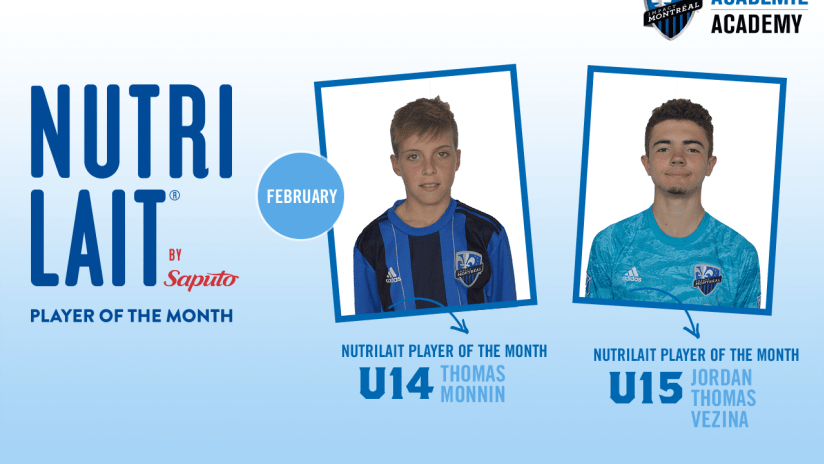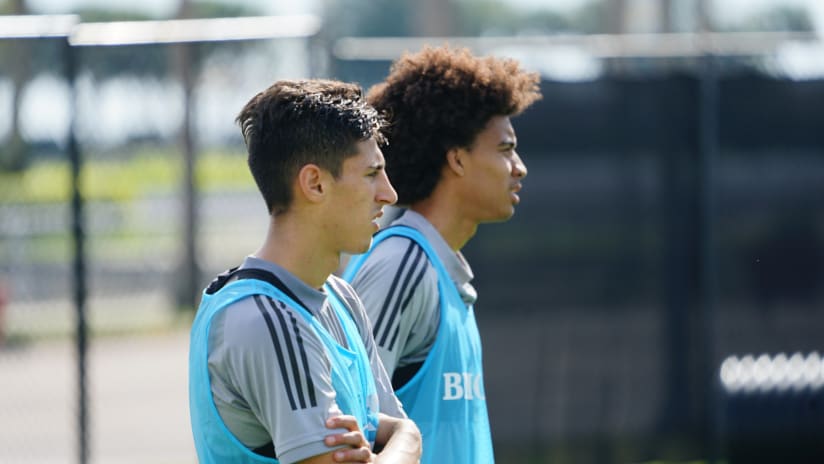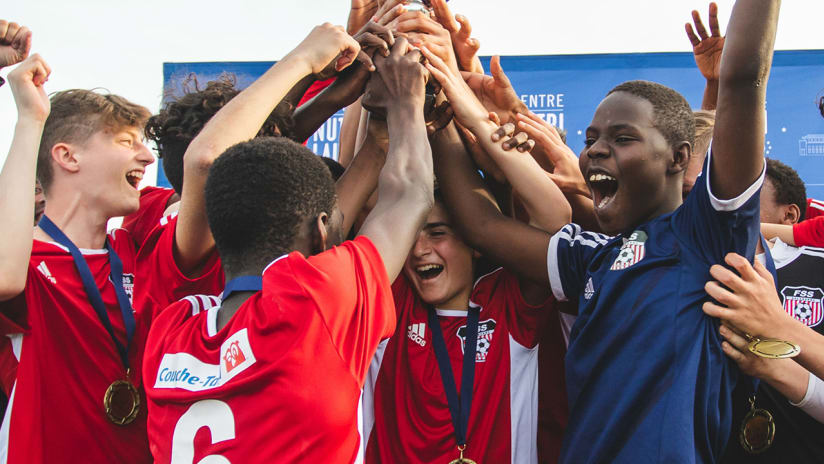After tests were conducted by sports therapist Marie-Christine Pelletier (Back to the Academy – Part 2), players take to the field to test their physical form. During the few weeks off, players all received programs to make sure they were ready once they get back on the field.
“We want the players to have the basics when they come back,” explains Academy physical trainer Yannick Girard. “We give them a program that they must follow in their last two weeks of vacation, so they can support the big work load planned during preparation.”
In the first week, players are evaluated on different physical qualities. They do all sorts of physical tests. It’s an initial evaluation, but it’s also a way to see if players worked during their vacation.
“We use the Vameval to identify groups of different levels,” added Girard. “When we work specifically on cardio with physical trainer Yoann Damet, we will give each of them different intensity levels. We work based on percentages. Each group, whether they run at 18km/h or 14km/h, work at the same VMA percentage (maximal aerobic speed).”

The first weeks emphasize the physical aspect to make sure players are at the maximum of their abilities when the USSDA season starts (for the U16 and U18).
“Even if you go on vacation, you don’t lose a tactical intelligence,” adds the physical trainer. “It takes some time to get some of the automatic movements back, but it comes back quickly. It’s the same thing for the technical aspect. With five training sessions a week, it comes back. For the physical aspect, you lose a percentage of your quality when you take a break. It’s important to focus on this.”
Despite this, players are still asked to take a break from soccer during their vacation.
“Players already have a busy year,” added Girard. “If we ask them to cut soccer completely during their break, they come back with more hunger to play. We ask them to do other activities like tennis, beach volleyball, jogging. That way, they keep working, they go outside and it changes their thoughts a bit. It’s important to take a break from soccer.”
Many tests are conducted in the first few weeks that focus on different physical aspects of the game. The Vameval one measures players’ cardio. They follow a pace given by the coaches on a 200 meter circular track until they can’t follow anymore. Then, the players calculate their speed explosion and acceleration with 10 and 30 meter sprints. The CMJ test (Countermovement Jump) measures the vertical jump, as they jump as high as possible with their hands on their hips. Finally, the horizontal leap is two steps for momentum before going as far as possible with five consecutive jumps. This test shows the potential strength of a player and his coordination.
Players also get ready by playing some friendly games to get back to an ideal level. For the U16 and U18 teams, the goal is to be ready for the USSDA season, which starts on September 12 against the Empire Revolution.



